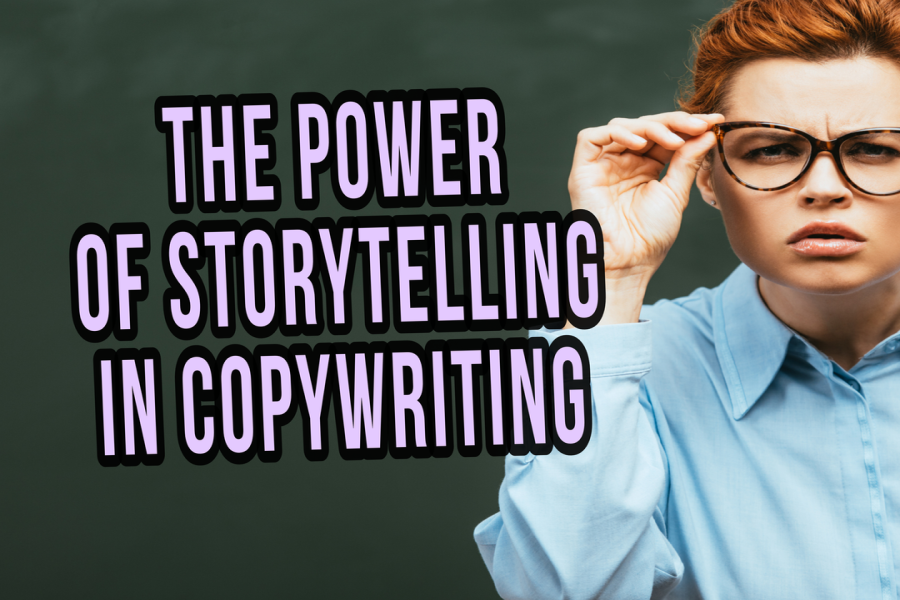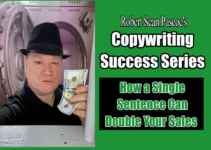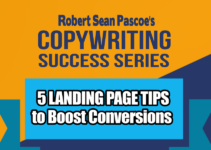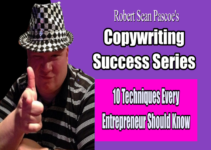Let’s step into a word of copywriting where storytelling takes center stage.
Together, we’re going to uncover the magic of weaving narratives that do more than just sell – they resonate. We’re not just talking about listing features and benefits; we’re talking about creating stories that forge a real, emotional bond with your audience.
Ready to embark on this journey? Let’s unravel the secrets of how storytelling can not only enhance your copy but transform it into something truly memorable and impactful.
1. The Magic of Stories:
Storytelling is not just a tool; it’s a bridge connecting the human experience to the world of marketing. It taps into our fundamental desire for connection and understanding. When storytelling is woven into copywriting, it transforms simple messages into narratives that resonate on a deeply personal level. This approach does more than keep readers engaged; it makes them feel seen and understood.
Imagine a story that starts with a common challenge your audience faces. As the narrative unfolds, it mirrors their experiences, frustrations, and aspirations. This isn’t just about telling a tale; it’s about creating a shared experience. When your audience sees their own life reflected in your story, the connection is powerful. They’re not just reading about a product or service; they’re reading about a solution to their life’s narrative.
Now, consider the power of emotions in storytelling. Emotions drive decisions, and stories are the best way to tap into these emotions. By crafting narratives that evoke happiness, relief, excitement, or even fear (of missing out), you’re not just engaging the mind; you’re engaging the heart. This emotional connection is what turns readers into loyal customers.
But storytelling in copywriting isn’t just about emotions; it’s also about credibility. Sharing real-life stories, customer testimonials, or even your brand’s journey adds layers of authenticity and trustworthiness to your message. It shows you’re not just selling; you’re understanding and solving real problems.
Finally, storytelling humanizes your brand. In a world where consumers are bombarded with ads, a genuine story stands out. It breaks down barriers, fostering a sense of friendship and trust between your brand and your audience.
2. Know Your Audience:
Gaining a deep understanding of your audience, particularly established entrepreneurs, is vital for crafting effective story-driven content. These individuals are more than just business owners; they are people who navigate a complex world of decisions, risks, and innovations daily. They appreciate content that acknowledges both the pragmatism required to run a business and the creativity that drives growth and change.
To truly resonate with them, explore their day-to-day challenges in depth. What are the pain points in managing their businesses? How do they balance the need for strategic thinking with the demands of their personal lives? Understanding these aspects allows you to create narratives that are not just engaging but also deeply relevant.
Moreover, consider their motivations and goals. Many entrepreneurs are driven by a desire to innovate, make an impact, and leave a legacy. Your stories should tap into these aspirations, showing how your product or service aligns with their broader objectives. It’s about creating content that speaks not just to their business needs but also to their personal values and visions for the future.
By diving deeper into the lives of your target audience, you can craft stories that go beyond the surface level. This approach leads to content that not only captures their attention but also fosters a sense of connection and loyalty. In essence, knowing your audience at this deeper level is the key to creating content that is not just seen or heard, but felt and remembered.
3. Creating Compelling Characters:
4. Structuring Your Narrative:
5. Eliciting Emotions:
Emotions are the heartbeat of effective storytelling in copywriting. Tapping into emotions like empathy, joy, fear, or hope can dramatically elevate the impact of your content. When you narrate Sarah’s story, for instance, delve deeper into her emotional world.
Describe how missing her child’s school play because of an urgent meeting left her feeling torn and guilty. This evokes empathy, as many in your audience can relate to the struggle of balancing professional commitments with personal life. Then, illustrate the joy and relief she experiences when finding a solution that helps her manage her time better. Maybe she uses your product and, for the first time in months, can join a family dinner or attend her child’s soccer game.
Harnessing fear can also be effective, especially when highlighting the consequences of not resolving a particular issue. For example, stress the potential loss of valuable personal moments if work-life balance is not achieved. Contrast this with a sense of hope, showing how your product or service offers a way out of this dilemma.
By diving into these emotional depths, you create a story that resonates on a more profound level. Your audience isn’t just reading about a product; they are experiencing a journey filled with emotional highs and lows that mirrors their own life. This deeper emotional connection not only makes your content more memorable but also drives your audience to action, motivated by a desire to experience the positive emotions depicted in your narrative.
6. Crafting Authenticity:
ABOUT ROBERT SEAN PASCOE

His path to copywriting wasn’t the usual one. He started in corporate life, often wading through jargon-heavy reports. Seeing the need for crisp, clear messaging, Robert made the leap into copywriting.
Since making that switch, he’s partnered with businesses around the globe. He helps them fine-tune their messaging, draw in the right customers, and boost sales. His forte? Turning dry, lifeless content into compelling stories that inspire action.
What makes Robert unique is his approach to each business as a distinct entity. He understands that every company has its own story and value proposition. He’s a whiz at crafting narratives that not only resonate with target audiences but also position businesses as the go-to solution.
For Robert, the power of the right words is transformative. They can turn casual browsers into committed customers and flat sales into steady growth. So, if you’re eager to up your business game with truly engaging copy, Robert Sean Pascoe is your go-to guy.





